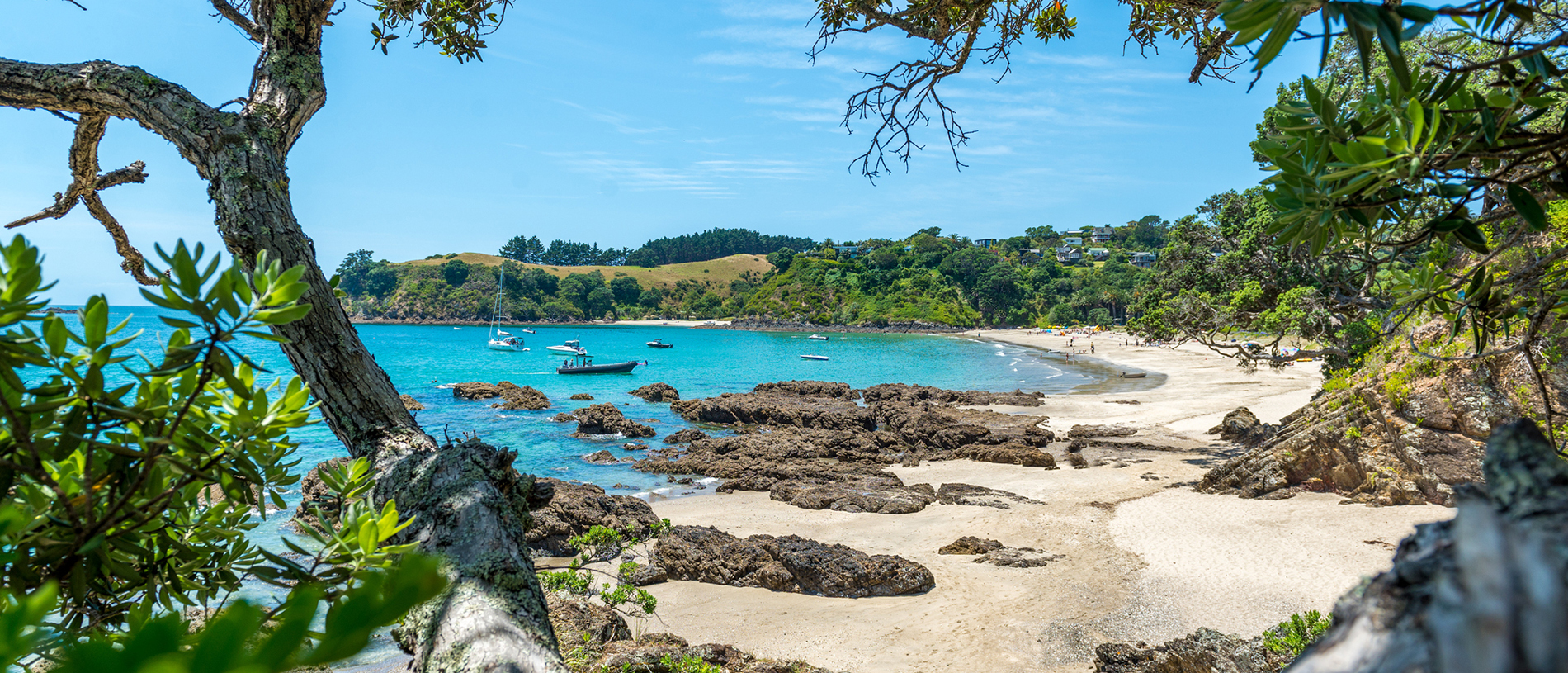
Waiheke Island: a self-contained bubble of pure pleasure
Feel a world away, retreat into lazy days and drift from vineyards to olive groves to beaches on Waiheke.
Te Matuku Marine Reserve protects one of Waiheke Island’s largest and least disturbed estuaries, along with an area outside Te Matuku Bay in the Waiheke Channel.
This marine reserve consists of saltmarsh, mangroves, small longshore spits, tidal creek habitats and extensive intertidal flats, and represents a rare continuity of conservation from freshwater to briny.
Te Matuku Bay almost dries at low tide, exposing extensive sand and mudflats. These mudflats provide rich pickings of sea snails, cockles, crabs and worms for wading birds at low tide. As the tide rises, juvenile flounder and mullet move in to feed on this abundant invertebrate life.
A notable feature of the reserve are the spiny tubeworm (Pomatoceros caeruleus) colonies dotted over the intertidal flats. This species used to be abundant in the inner Waitemata Harbour but is now rare there.

© DOC
Three small shell spits on the eastern side of Te Matuku Bay are roosting and nesting areas for native and migrant shorebirds. The bay is named after the now-rare matuku, or Australasian bittern, and these can sometimes be seen in the adjoining scenic reserve wetland.
Offshore, fine muds extend out into Tāmaki Strait and around Passage Rock. The greatest depths in the reserve occur off Ōtakawhe Bay at the entrance to Waiheke Channel. Here strong tidal currents expose patches of shell that are colonised by sponges, anemones and soft corals. Juvenile snapper and trevally are abundant around the reefs. Rig (spotted dogfish) and flatfish are common in Te Matuku Bay. Te Matuku Bay is home to a variety of birdlife, including the New Zealand dotterel.